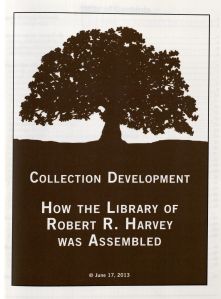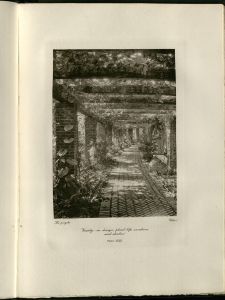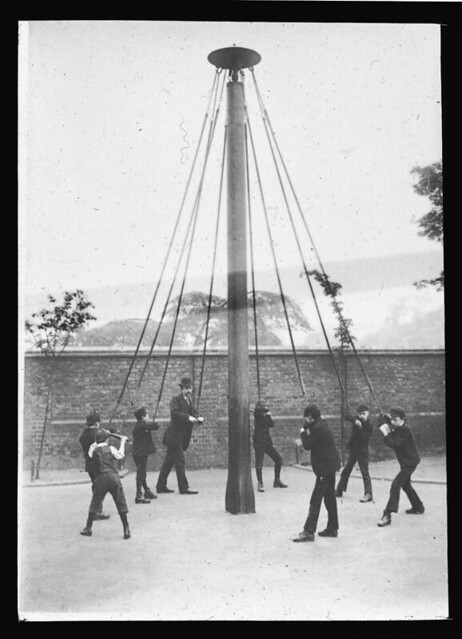As the holiday season is here, and the cold weather has descended upon us in Iowa and the rest of the Midwest, many are spending more time indoors with family and friends. The end of the year and the beginning of the next is when we frequently receive an upturn in questions regarding alumni, many likely arising during conversations during a winter get-together or as people think about family at this time of year. What resources do we have in the university archives to look into Iowa State alumni?

I’ll use a 1916 graduate, Arthur Carhart, as an example to walk readers through the possibilities. Why did I choose Arthur Carhart? This past year, I visited the Gila Wilderness Area in New Mexico, which was established in large part due to the efforts of Aldo Leopold, a native Iowan (and, as a side note, we hold the papers of his brother, Frederick Leopold) – and Leopold’s ideas were probably influenced by Carhart, since they conversed on the wilderness idea at least once. I am repeatedly reminded that even as a state which has significantly changed its landscape, Iowa has had many people who are passionate about conservation and preserving the land…as a perusal of this subject guide for our collections will reveal.
One such person I recently learned about was, as you all know by now, Arthur Hawthorne Carhart. One hundred years ago this year (1916), Carhart graduated with Iowa State’s first degree in landscape gardening (later landscape architecture), and became the first landscape architect for the National Forest Service. Carhart’s vision for wilderness preservation had a lasting impact here in this country. One of his first projects was to survey Trappers Lake in Colorado’s White Pine National Forest for development. After his visit, he recommended instead that the area be designated as a wilderness. Trappers Lake became the National Forest’s first wilderness preservation area. Before leaving the Forest Service to work in private practice, Carhart recommended that an area of northern Minnesota be designated as a wilderness area, and this is now the Boundary Waters Canoe Area Wilderness. Carhart later became a successful writer, drawing upon his earlier experiences. The Special Collections Department at the University of Iowa holds the Papers of Arthur Carhart, which contain his literary manuscripts.
What was Carhart’s life like here at Iowa State while a student, and what do we have which documents his accomplishments after graduation? As our genealogy subject guide reveals, we have a variety of resources with which to begin.

The Bomb, the student yearbook, can often be a rich source of information and a great place to begin – especially if the alum was involved in a variety of student organizations, as Carhart was. During his senior year alone, the 1916 Bomb reveals that he was a member of Acacia, band, glee club, horticulture department club, and the Iowa State College Chapter of the Cosmopolitan Club (an international student group; more on the Iowa State chapter can be found in this earlier blog post).

In addition to physical copies here in the department and the general collection, the Bomb is now available online through Digital Collections.
We also have his bachelors thesis (call number: Cob 1916 Carhart) entitled “Landscape Materials for Iowa.” As Carhart states in his forward, he has compiled a listing of plants hardy enough to use in the middle west state of Iowa. No single book, or even group of books, existed at that time which did so for midwest states. This groundbreaking work of an Iowa State senior is a great view into Carhart’s work as a budding landscape architect, in addition to preserving an annotated list of plants available for such work in the early part of the 20th century. (Please note: we are in the process of cataloging our bachelors theses. His thesis will soon be discoverable through the library’s search system…just not yet!)

There are multiple other resources one could go to to find other windows into Carhart’s life here at Iowa State – but I will leave those up to you to find, if you’re so inclined. The student directories would reveal where he lived while here, as well as his hometown and major. This would also be a good place to start if you had a basic idea for when someone attended, but not the exact date. The records for the student groups he was involved with here on campus may have photographs, scrapbooks, programs, and other materials documenting what he may have done within those organizations.
His file in our alumni files (RS 21/7/1) reveals what he accomplished after graduating from Iowa State – and this included quite a lot, far more than I knew about him before examining the file! In addition to his accomplishments mentioned above, a 1969 letter to President Parks (from a nomination packet for Iowa State’s “Distinguished Achievement Citation”) says that he “conceived and carried through to establishment” the Conservation Library Center (now the Conservation Collection, Denver Public Library), and saved Dinosaur National Monument from a proposed dam. Carhart’s alumni file is full of additional information, including news clippings, resumes, articles, correspondence, updates to the alumni association, among others.
Incidentally, Dinosaur National Monument has at least two Iowa State connections. In addition to Carhart’s work, the large array of fossils which eventually became Dinosaur National Monument was discovered by another Iowa State alum, Earl Douglass. I’ll leave it to the curious among you to find out what we may have on Douglass! I hope this post has given everyone a better idea about the resources we have in the University Archives related to former students.








 Crowds watching canoes navigate Lake LaVerne during the 1934 VEISHEA.
Crowds watching canoes navigate Lake LaVerne during the 1934 VEISHEA. LaVerne Noyes (from University Archives Photographs, Box 1532)
LaVerne Noyes (from University Archives Photographs, Box 1532)
 Landscape architecture students sketching at Lake LaVerne in 1942.
Landscape architecture students sketching at Lake LaVerne in 1942. Lake LaVerne area under construction in 1933, when attempts were made to reduce the silt and other sediment build-up in the lake. This photograph, along with many others, can be found on our Flickr site.
Lake LaVerne area under construction in 1933, when attempts were made to reduce the silt and other sediment build-up in the lake. This photograph, along with many others, can be found on our Flickr site.
 Iowa State’s central campus area in 1904. In the distance one can see Margaret Hall (girls’ dormitory) to the left and Catt Hall (then Botany Hall) to the right.
Iowa State’s central campus area in 1904. In the distance one can see Margaret Hall (girls’ dormitory) to the left and Catt Hall (then Botany Hall) to the right. Another view of central campus (a campus horse carriage can be seen in the foreground) in 1906, the year the Olmsted Brothers submitted their report.
Another view of central campus (a campus horse carriage can be seen in the foreground) in 1906, the year the Olmsted Brothers submitted their report. Above is a well-loved image of sheep on the central lawn near the Campanile. The photograph was taken around 1905, close to when the Olmsted Brothers wrote their report. Even though this photograph was taken over 100 years ago, when major changes were taking place on campus, one can almost picture a similar scene in the same place today. Despite all the changes, new buildings, and major increase in the number of students attending Iowa State, the central lawn has remained for students to enjoy!
Above is a well-loved image of sheep on the central lawn near the Campanile. The photograph was taken around 1905, close to when the Olmsted Brothers wrote their report. Even though this photograph was taken over 100 years ago, when major changes were taking place on campus, one can almost picture a similar scene in the same place today. Despite all the changes, new buildings, and major increase in the number of students attending Iowa State, the central lawn has remained for students to enjoy! Another view of central campus, this time from 1897. In the distance Old Main, which burned in 1902, can be seen to the left. Morrill Hall is to the right.
Another view of central campus, this time from 1897. In the distance Old Main, which burned in 1902, can be seen to the left. Morrill Hall is to the right. For instance, a
For instance, a 